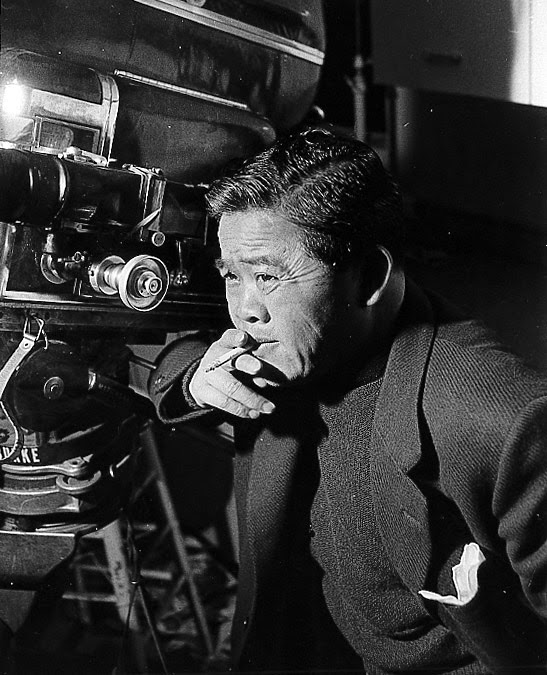James Wong Howe (1899-1976)
 |
| A study in concentration, circa 1940s. |
�I believe that the best cameraman is one who recognizes the source, the story, as the basis of his work.�
 |
| Shooting The Alaskan, 1924. |
�Sometimes it�s not how much light you use to get an effect, it�s how little you use and still make it work. There are a lot of rules to be broken in photography, and you�ve got to have courage.�
 |
| With his Academy Award for The Rose Tattoo, 1955. |
[From Hollywood Cameramen, 1970, by Charles Higham]
�I have a basic approach that goes on from film to film: to make all the sources of light absolutely naturalistic. If you are in a room and the scene is taking place at a certain time of day, try to find out where the light would come from, and follow that, don�t impose an artificial style.�
�I have a basic approach that goes on from film to film: to make all the sources of light absolutely naturalistic. If you are in a room and the scene is taking place at a certain time of day, try to find out where the light would come from, and follow that, don�t impose an artificial style.�
%2Bdirector%2BHerman%2BShumlin%2Band%2Bassistant%2Bdirector%2BDick%2BModer.jpg) |
| Shooting Watch on the Rhine, 1943, with (from left) director Herman Shumlin and assistant director Dick Moder. |
[On Humphrey Bogart]
�What I liked most about him I suppose was that he was honest, he never minced his words. Believe me, ninety-nine percent of the people in Hollywood go through life and never say what they mean, but Bogart wasn�t like that. There was no baloney about him.�
�What I liked most about him I suppose was that he was honest, he never minced his words. Believe me, ninety-nine percent of the people in Hollywood go through life and never say what they mean, but Bogart wasn�t like that. There was no baloney about him.�
 |
| Shooting a scene from Body and Soul on roller-skates, 1947. |
[From Hollywood Cameramen, 1970, by Charles Higham]
�On Body and Soul I myself got on roller-skates to shoot the boxing scenes and they pushed me around. I wanted an effect where the boxer is knocked out and he looks up into a dazzle of lights; with a heavy, fixed camera, you�d never get that.�
 |
| Holding his Academy Award for Best Black-and-White Cinematography for Hud. Leon Shamroy (right) holds his Oscar for Best Color Cinematography. |
[On John Frankenheimer]
�I don�t think John really understands dramatic values; he�s more or less mechanically inclined: lenses and camera and all that. All that�s my job; he ought to worry about the story and the actors.�
�I don�t think John really understands dramatic values; he�s more or less mechanically inclined: lenses and camera and all that. All that�s my job; he ought to worry about the story and the actors.�
 |
| With Samantha Eggar on the set of The Molly Maguires, 1970. |
[From Hollywood Cameramen, 1970, by Charles Higham]
�Sweet Smell of Success was exciting; it was a pleasure to work with Sandy Mackendrick. I used varnish to give the look of the film a glitter, in the bars, many of them real in New York. I used very small bulbs; photoflood effects worked well because we had so much polish on the walls it made everything shine. The whole film shimmered; few films have that look.�
 |
| On the cover of International Photographer, 1975. |
My favorite James Wong Howe-photographed films: Seconds (1966), Hud (1963), Bell, Book and Candle (1958), Sweet Smell of Success (1957), He Ran All the Way (1951), Mr. Blandings Builds His Dream House (1948), Body and Soul (1947), Pursued (1947), Kings Row (1942), City for Conquest (1940), They Made Me a Criminal (1939), The Thin Man (1934), and dozens more dating back to 1923.